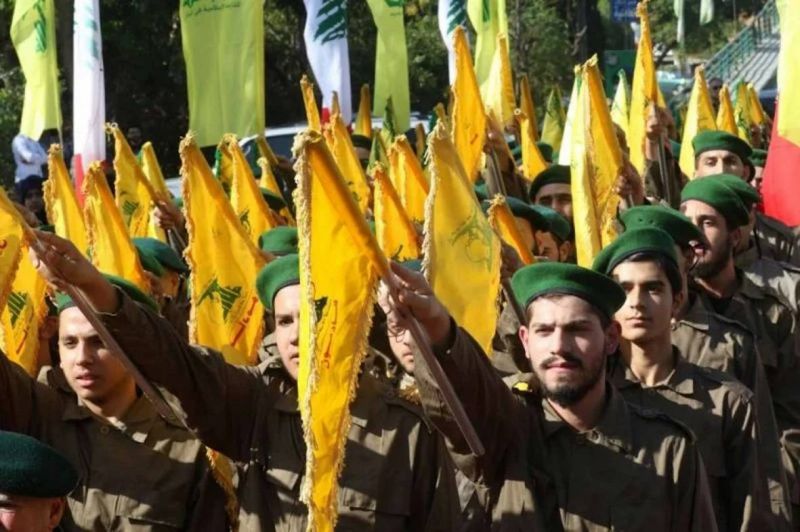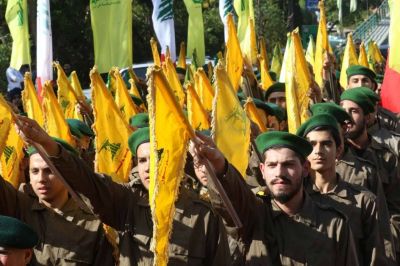
Hezbollah fighters during a military parade in South Lebanon in 2019. (Credit: Mahmoud Zayyat/AFP - File)
In a meeting held a few days ago with new Hezbollah recruits, the party’s Secretary General Hassan Nasrallah announced that more than 9,000 new recruits had joined the “resistance.” This number bolsters the 90,000 members of the al-Mahdi scouts, he said, according to Lebanese media. Nasrallah said the recruits comprise a pool of reservists upon whom the “resistance” can rely in case of need.
Nasrallah took the occasion to recall that the party can also count on at least 100,000 experienced fighters. The party leader had already disclosed this number following the October 2021 Tayyouneh clashes (between members of the Shiite and Maronite communities, the latter said to be close to the Lebanese Forces). If the count is accurate, Hezbollah can mobilize not less than 200,000 men in the event of an armed conflict.
“This is a staggering figure that should not be taken lightly. By mentioning nearly 200,000 elements in total, ready to go into battle, this means that in every Shiite family there is at least one fighter,” said Faisal Abdel Sater, an observer close to Hezbollah.
Mohanad Hajj Ali, a researcher at the Carnegie Middle East Center, cautioned that there is a major distinction between those within Hezbollah’s ranks who have undergone a few weeks of small-scale military training and the fighters who are dedicated to “the mission.” “These [reservists] have their regular jobs in civilian life the rest of the time and cannot fully dedicate themselves to military activities. So not all of them are operational,” said the researcher, who also questioned the validity of the figure of 100,000 fully dedicated combatants.
“We have to distinguish between three main categories,” he added, “reservists, contract elements and those who are fully dedicated to military operations.”
While Hassan Nasrallah’s statement may seem insignificant at first, since the Shiite party has never stopped recruiting, training and strengthening its military capabilities, its timing is significant as it comes at a time when the most right-wing government in Israel’s history — which local opposition describes as “dark, racist and evil” — has just come to power. Netanyahu’s gambit has caused great concern, raising fears of heightened tensions between the two countries, despite the signing of the maritime border delimitation agreement in October.
Israel’s announcement this week of planned military maneuvers in the occupied Shebaa Farms heightened fears of a wider confrontation, direct or indirect, involving Iran. “Our number one enemy is Iran. Israel is determined to counter by force any attempt by this country to deploy in Syria, on the northern border with Israel,” said Prime Minister Benjamin Netanyahu, as reported in Israeli media. He warned Hezbollah against any temptation to “cross red lines” or initiate any “hostile action against Israel.”
Nasrallah’s forecasts provoked more concerns about the forthcoming period than the party’s number of fighters. “We must be ready on both the military and security levels because the region and the world are heading towards major upheavals that will see the birth of new balances,” he said. He called on the new recruits, to prove themselves and to make greater efforts.
‘The greatest threat to Israel’
Nasrallah’s remarks coincided with an equally alarming tone used by the Israeli Jerusalem Post which, in an article dated Jan. 6, stated that, according to Israeli military officials, “Hezbollah, with its approximately 150,000 rockets and Radwan special invasion forces, is Israel’s greatest threat.” The author of the article mentioned in passing the numerous surveillance points the Iran-aligned party had installed along its southern border. He said this increased observation of the Israeli army’s movements point to “a return of the party’s elements to the area.” The Israeli daily said some 15 observation posts had been set up along the border, in containers with the logo of an ecological NGO called “Green Without Borders” — ideal camouflage in an area under the control of the United Nations Interim Force (UNIFIL).
Is this region close to a confrontation? “While it is true that today the probability is higher than it was some time ago, the possibility of an armed conflict is not certain at this stage,” said Hajj Ali. The regional landscape, he said, lends itself to this, as long as US-Iranian nuclear talks are stalled.
“They are clinically dead even if neither side wants to declare their death is final,” he said.
Although Nasrallah has a habit of flexing his muscles and issuing warnings whenever Israel forms a new government, this time fears are heightened by the fact that the new cabinet appears determined to confront Iran.
The Hezbollah head had set the tone in his last speech. “This government does not scare us. We are present and ready, and we will not allow any change in the rules of deterrence and engagement with Lebanon,” he said. A source close to the Shiite party indicated that the announcement regarding the new recruits is indeed intended to recall that Hezbollah is ready for a confrontation in case of war.
“Hassan Nasrallah’s remarks to the new recruits send a strong message,” said Abdel Sater, “intended to convey the party’s power to Israel and to showcase its human resources and logistical capabilities.”
This story was originally published in French in L'Orient-Le Jour, translated by Joelle Khoury
